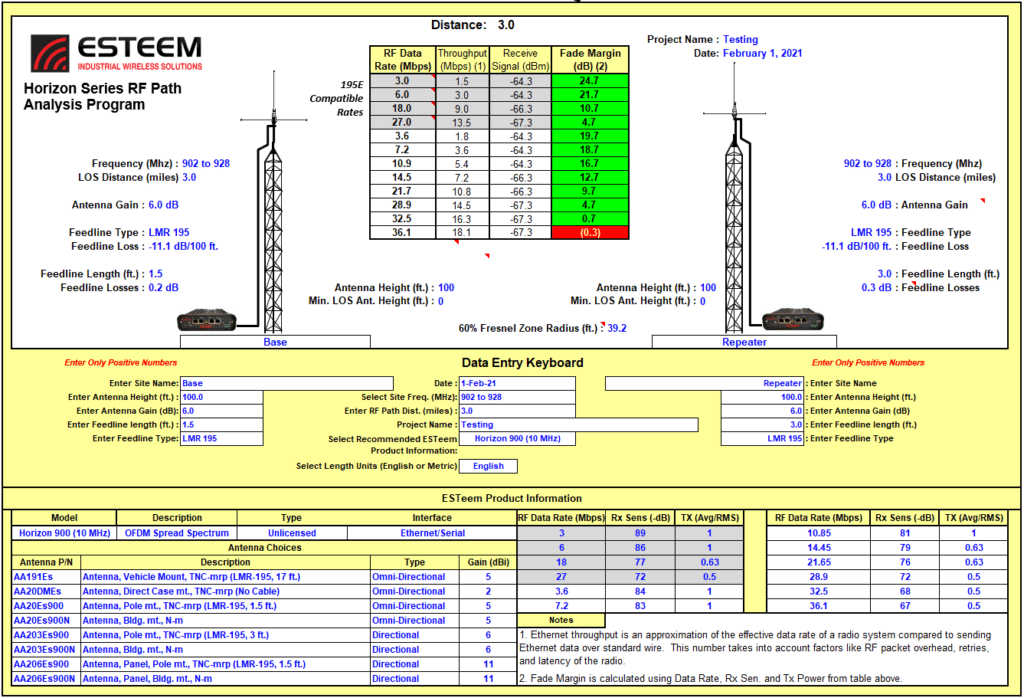We’ve emphasized over the last few months that successful industrial wireless network design isn’t simply a matter of buying some hardware and then throwing it up someplace that looks like it might work.
It’s not rocket science, but good wireless network design requires careful consideration of a number of issues, including the distance that needs to be covered by your network, the interface you’ll be dealing with and the type of environment you’re operating in.
The answers to these questions will help inform your decisions on things like the type of antenna you’ll need as well as the licensed or unlicensed radio frequencies that will work best for your specific application.
Once you understand your specific situation and the reasons you should go wireless, a straightforward four-step plan will help ensure the ultimate, long-term success of your industrial wireless network:
- RF Network Design
- Radio Site Survey
- Installation
- Commissioning
The first step, RF network design, is a valuable tool for setting expectations, avoiding unpleasant surprises on site and eliminating the possibility of expensive rework. This step comprises a software feasibility study, plugging values for designated measurements (such as the distance between points within the network and the height of antennas) into a software program.
 In the case of ESTeem’s RF Site Design Tool, the program will render an RF Path Analysis that displays calculated figures for:
In the case of ESTeem’s RF Site Design Tool, the program will render an RF Path Analysis that displays calculated figures for:
- ERP (Effective Radiated Power)
- Feedline Loss
- Transmitting Power
- Expected Receiver Signal Strength
- Receiver Sensitivity
- Maximum Distance
Our Design Tool displays calculations for each end of the radio system, as well as key site data such as fade margin, height warnings and Fresnel zone warnings.
With your anticipated signal levels and achievable data rates in hand, we can move on to Step 2, the radio site survey, which will serve as the foundation for your industrial wireless network.
This phase of the process:
- Provides a complete physical on-site analysis
- Validates software modeling results
- Evaluate frequency of operations
- Analyzes data throughput
The result of the first two steps is a thorough understanding of the type of wireless hardware and network that are required for your application. This leads directly to installation of the equipment by a qualified systems integrator (we can supply the contact information of some knowledgeable, successful integrators, if necessary).
Even though it seems as if we’ve come to the end of our story, there’s still the fourth, crucial step – commissioning – to help ensure your industrial wireless network will operate as needed for years to come.
Commissioning includes RF communications and data testing, with ESTeem support personnel on site for installation and startup to provide technical assistance and customer training.
Each step of the process delivers information or action crucial to the success of your wireless network. Take any step away, and you risk failure.
Learn more:
Which Unlicensed Frequency is Right for Your Application?
The Tools for Industrial Wireless Success

